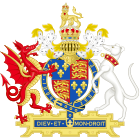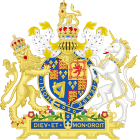Horsebread
| Type | Bread |
|---|---|
| Place of origin | Medieval Europe |
| Main ingredients | Legumes, grains, nuts, roots |
| Horsebread Act 1540 | |
|---|---|
| Act of Parliament | |

| |
| Long title | An Act concerning baking of Horse-bread. |
| Citation | 32 Hen. 8. c. 41 |
| Dates | |
| Royal assent | 24 July 1540 |
| Horsebread Act 1623 | |
|---|---|
| Act of Parliament | |

| |
| Long title | An Act concerning Hostlers and Inn-holders. |
| Citation | 21 Jas. 1. c. 21 |
| Dates | |
| Royal assent | 29 May 1624 |
Horsebread was a type of bread produced and consumed in medieval Europe. At the time, it was considered to be of low quality, made from a seasonal mix of legumes (such as dry split peas) and bran along with other non-wheat cereal grains such as oats, rye, and acorns. It was one of the cheapest breads available.
As the name suggests, it was primarily used as a feed supplement for horses, being more compact and easier to digest than bulkier feed like hay. Horsebread was given to work horses to help them recover, and special horsebread recipes were developed for race horses as part of their training.
During times of siege or famine, the less-expensive horsebread could sustain the population, and was consumed by the very poor "even in times of plenty". It was associated with poverty, since those who could afford white bread (which was the most labour-intensive, and therefore expensive, bread) considered horse bread and other breads like rye or barley breads unfit for their position in society.
White breads were generally eaten by only the middle class and wealthy, because of the labour involved in refining flour. This is in contrast with modern whole-grain breads, which are typically seen as premium-priced health foods or gourmet foods. This is in part because modern flour has a higher gluten content than flour produced in medieval Europe, so bread made from less-refined flour is more palatable than it would have been during the Middle Ages.
See also
- Brown bread – another European bread that was originally considered undesirable
- Polenta – as a staple food of the poor in early modern northern Italy
- Sprouted bread
- Whole wheat bread